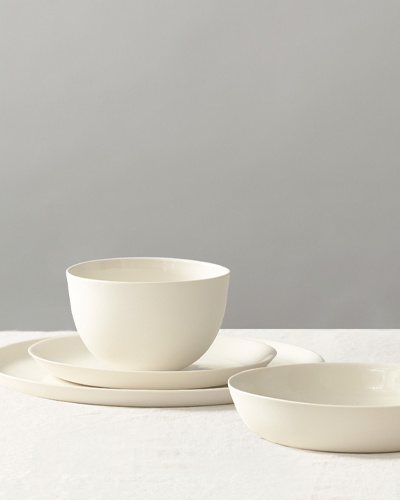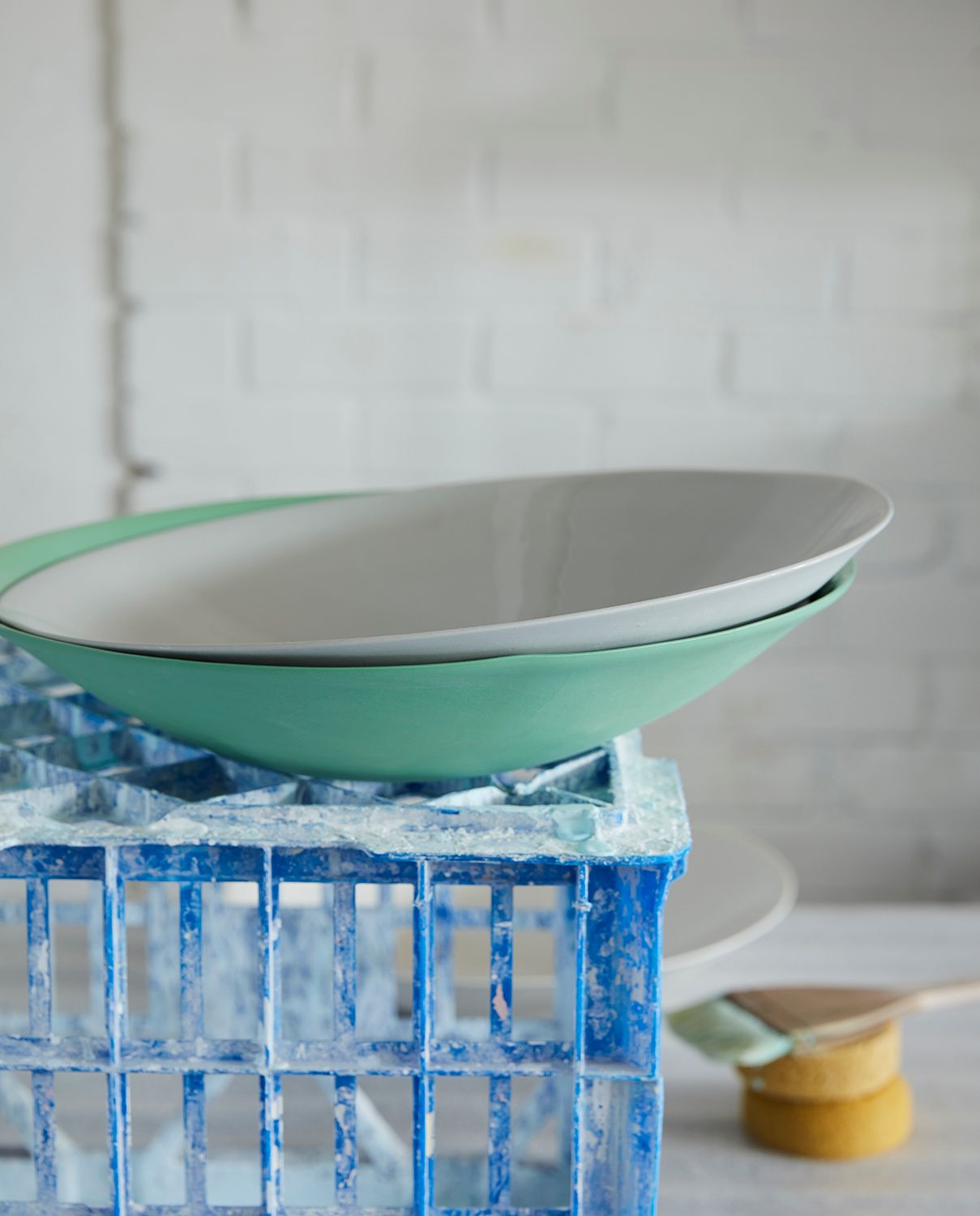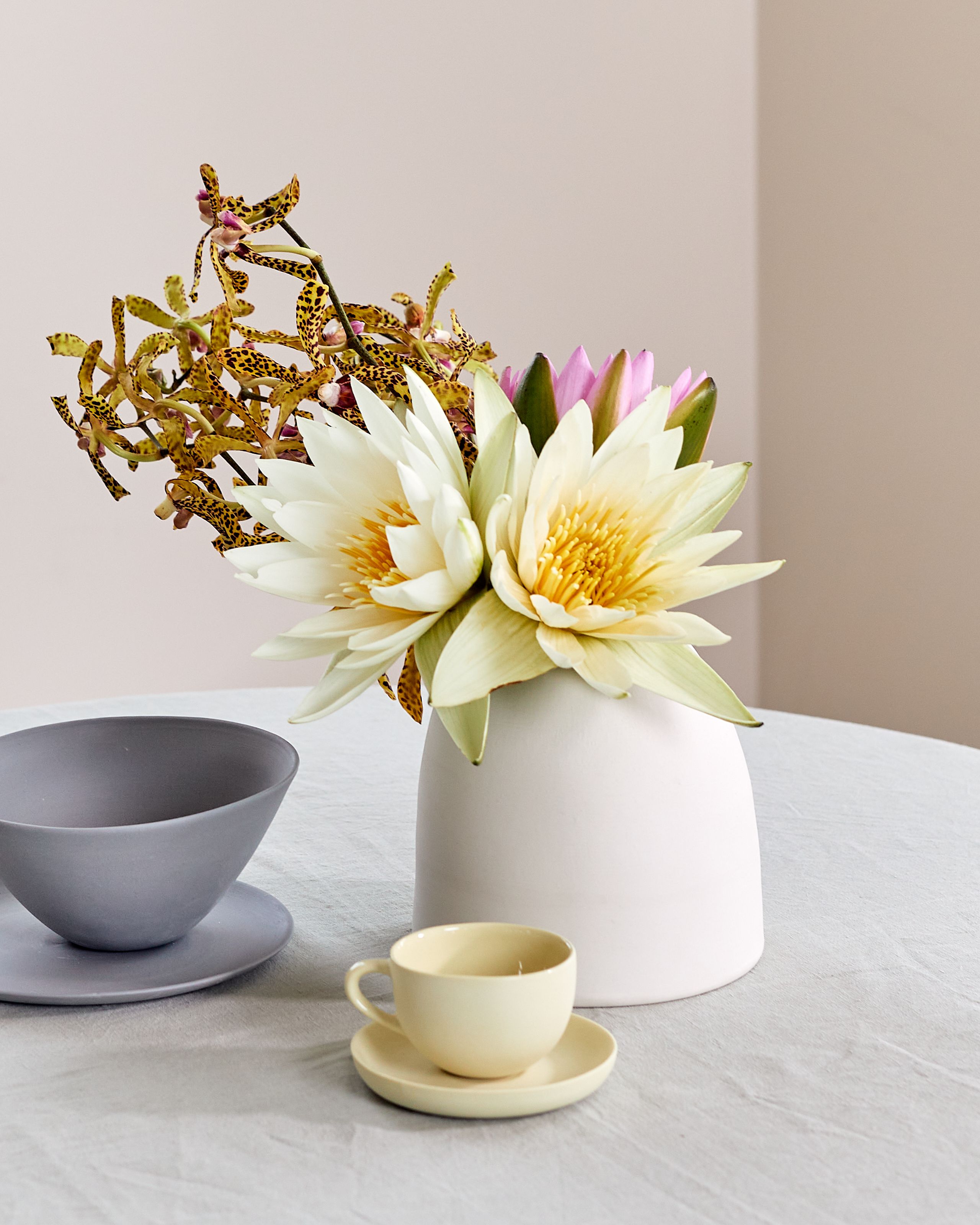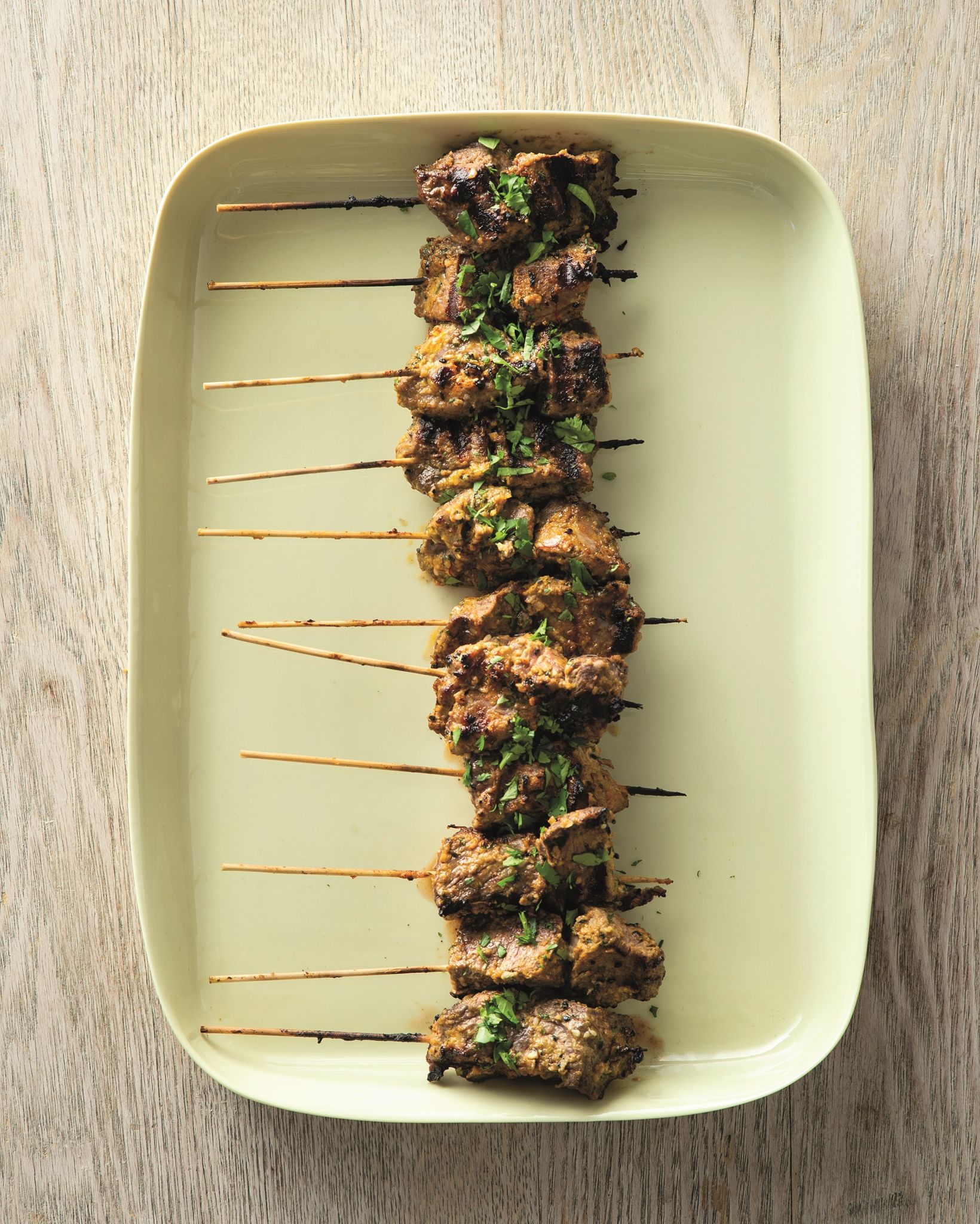Since 1994, Mud Australia has created elegant and timeless porcelain homewares. AU
The original Mud Australia store opened in Woollahra in 2007. Since then we’ve opened 12 stores globally.
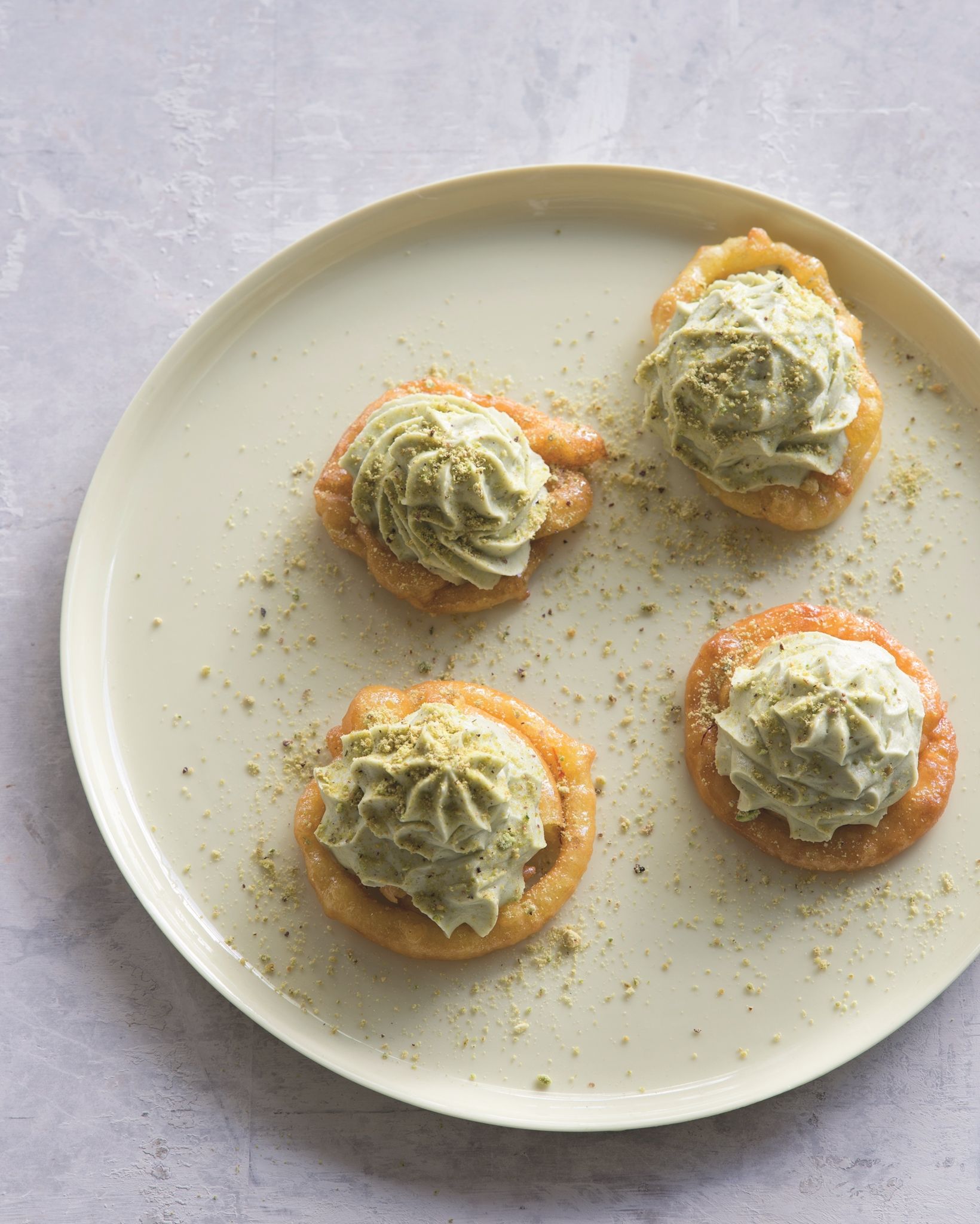
This modern, sophisticated interpretation is tributed to Christine's friend and colleague, chef Manish Mehrotra of Indian Accent in Delhi. He partners it with rabri, a thickened sweetened milk that is reduced to a creamy consistency, which he serves from a siphon that aerates the cream. Inspired by his clever presentation, which gives tradition a modern perspective, Christine has made a lighter-textured, easier-to-make pistachio cream that’s piped onto the jalebi disc. The jalebi can be served on their own without the cream, if you would like to make them dairy-free.
Serves 8
Ingredients:
Serves 8
¼ teaspoon saffron threads
1 cup (5.5 ounces) plain flour
1 tablespoon rice flour
¼ teaspoon baking powder
1 tablespoon fresh curd (hung yoghurt - see below)
12.5 ounces caster sugar
¼ teaspoon ground cardamom
3 teaspoons rosewater
2 cups (500 ml) vegetable oil, for deep-frying
120 g peeled pistachios, chopped to a fine crumb
PISTACHIO CREAM
2.7 ounces pistachio paste, see Glossary
⅓ cup (2.7 ounces) caster sugar
2 cups (17 fluid ounces) thickened cream
Method:
To make the pistachio cream, whisk the pistachio paste, sugar and cream in a stand mixer until combined and thick. Spoon into a piping bag fitted with a star nozzle (size 9) and tie the end to secure. Refrigerate until ready to serve.
To make the jalebi batter, place the saffron in a small frying pan over low heat and dry roast for 10 seconds. Allow to cool. Place in a mortar and pestle and grind to a powder. Add the saffron powder to a small glass with ¼ cup (2 fluid ounces) hot water and stir to combine. Place both flours, baking powder, curd and 3 fluid ounces warm water in a bowl and whisk until combined. Add 1 teaspoon of the saffron water and whisk until smooth. Cover bowl and set aside for 2 hours to ferment.
While the batter is fermenting, make the syrup. Place the sugar and 10 fluid ounces water in a saucepan over high heat and simmer, stirring to dissolve sugar, for 5 minutes. Add the cardamom and remaining saffron water and cook for 2 minutes. Turn off heat and add the rosewater.
To cook the jalebi, whisk the batter thoroughly and pour into a piping bag fitted with a small round nozzle (size 2). Twist and tie the end to secure. Heat the oil in a frying pan to 302ºF. Test the temperature with a little batter, if it sizzles, the oil is ready. Making only 2 or 3 jalebi at a time, pipe the batter into the oil in a steady stream to form coils approximately 8 cm in diameter. Deep-fry for 2 minutes or until golden and crisp, turn and cook on the other side for a further 2 minutes. It sometimes takes a few goes to get this right, so don’t despair. Remove jalebi with a mesh spoon and drain on paper towel for 1 minute. Once drained, add to the saffron syrup to soak for 5 minutes. Remove and place on a wire rack to remove excess syrup and dry out slightly.
To serve, place the jalebi on a plate and pipe the pistachio cream on top, forming a raised peak in the centre. Dust liberally with pistachio crumbs to lightly cover the surface of the cream. Serve immediately.
How to make fresh curd (hung yoghurt)
Indian recipes call for curd or hung yohurt - both terms are interchangeable and both are correct. They yield is generally a little more than half of the quantity of yoghurt you start with.
Ingredients:
Makes approximately 600g
1kg yoghurt
1 teaspoon table salt
Method:
Line a colander with a double layer of muslin cloth. Stir the salt into the yoghurt and pour into the muslin-line colander. Fold the muslin over to cover the yoghurt and sit the colander over a deep bowl or pot. You want to ensure there is space between the nase of the colander and the base of the bowl. Refrigerate for 6 hours to thicken the yoghurt. During this time, the whey will have dripped through the muslin, reserve the whey for another use (I use it in place of water when cooking rice). Don't hang the yoghurt for too long, as it will become too firm. Lift the colander from the bowl and unwrap the muslin, Place a flat plate over the colander and invert the curd onto the plate. Lift the colander from the curd and gently remove the muslin, The curd is ready to use.
